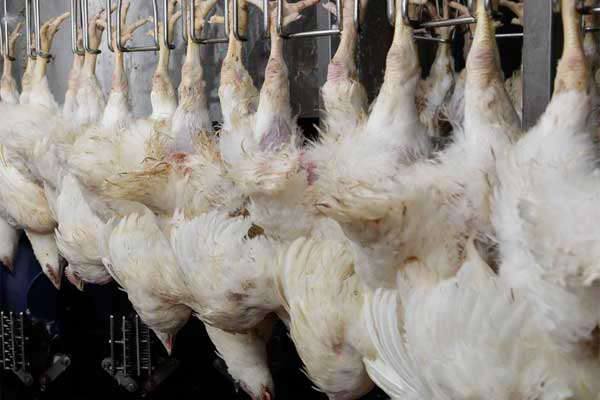Bacteriophages for better quality in raw poultry by-products

Worldwide billions of animals are raised, slaughtered, and processed annually, resulting in large amounts of inedible by-products such as heads, feet, offal, and feathers. These by-products can be contaminated and spoil and create toxic gas.
Microorganisms from skin, gastrointestinal tracts, processing equipment and the environment, can easily contaminate these by-products and cause spoilage due to rapid multiplication at ambient temperature. This spoilage is always accompanied by the production of off-odours, some spoilage microorganisms producing hydrogen sulphide (H2S) gas during metabolism. A noticeable production of H2S in a rendering plant can be hazardous to workers’ health due to the toxic nature of the gas.
To control spoilage (and also pathogenic) bacteria in raw animal materials, many preservation methods have been developed (modified atmosphere packaging, lactic acid bacteria, antibacterial essential oils, nitrate salts, organic acids, and antibiotics). The biological control, by bacteriophages, in raw animal by-products has not been studied. Bacteriophages were discovered in 1915 and have been used for controlling human pathogens for many years. Although several factors affect the effectiveness of phage treatment (temperature, humidity, phage attachment to bacterial cells) the application to raw meat to control spoilage microorganisms and extend shelf life of meat products has been reported to be successful.
A specific bacteriophage cocktail to control H2S production was used in different raw poultry by-products in the laboratory and in a greenhouse, simulating conditions during transport and in a rendering facility. In the laboratory, phage treatment applied to fresh chicken inoculated meat, spoiled chicken meat, chicken guts, and chicken feathers reduced H2S production by approximately 25 to 69% at temperatures from 20 to 37°C. In the greenhouse, phage treatment achieved approximately a 30 to 85% reduction of H2S yield in chicken offal and feathers. The results demonstrate that a phage cocktail can reduce the production of hydrogen sulphide significantly in raw animal materials at ambient temperatures, leading to a safer working environment and high quality product with less nutrient degradation for the rendering industry.
[Source: Chao Gong, Xiaohua Liu and Xiuping Jiang, Poultry Science Vol. 93]












